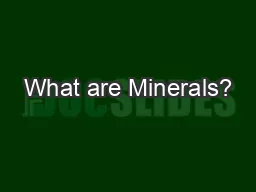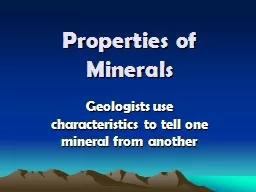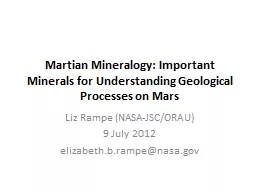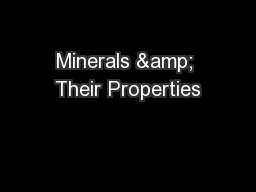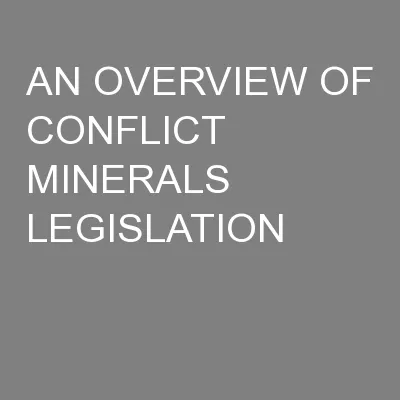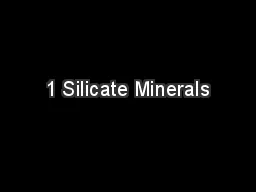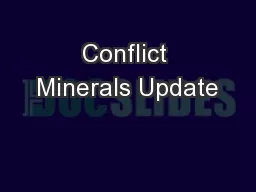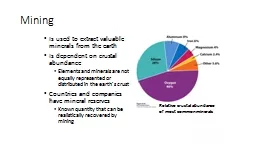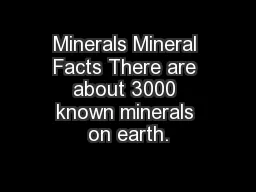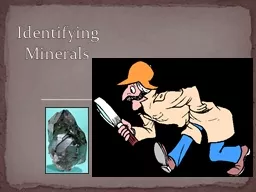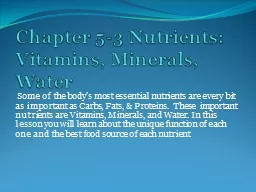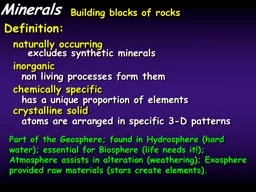PPT-What are Minerals?
Author : olivia-moreira | Published Date : 2017-09-05
Minerals are crystalline solids are inorganic substances not carbon based are formed through natural processes have a specific chemical composition Groups silicates
Presentation Embed Code
Download Presentation
Download Presentation The PPT/PDF document "What are Minerals?" is the property of its rightful owner. Permission is granted to download and print the materials on this website for personal, non-commercial use only, and to display it on your personal computer provided you do not modify the materials and that you retain all copyright notices contained in the materials. By downloading content from our website, you accept the terms of this agreement.
What are Minerals?: Transcript
Download Rules Of Document
"What are Minerals?"The content belongs to its owner. You may download and print it for personal use, without modification, and keep all copyright notices. By downloading, you agree to these terms.
Related Documents

